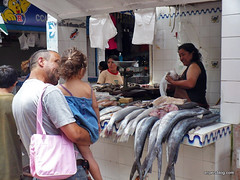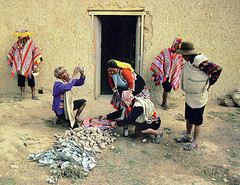Building boats in Santa Rosa
Tom Filipowicz in Chiclayo shows us around the small town of Santa Rosa and its small shipyard.
Article brought to you by Mochica Hostess Tours
I like Santa Rosa. It’s a quiet town on the ocean with friendly people and just the right amount of growth and activity to make it feel alive. There is a long, wide main street that has a hint of a touristy feel to it, though the town is not really into tourist promotion. You’ll see a few people swimming, but what really dominates the beach is hundreds of boats of all shapes and sizes; there for the purpose of being completed for their maiden voyage, or being refitted for what may be their final taste of the sea. What Santa Rosa is all about is the fishing industry, and particularly fishing boats.

There are four or five boat builders located in or near Santa Rosa. One recent afternoon we visited Astillero Santa Rosa EIRL boat builders located just outside of the town. There we saw two new boats in process and one being refurbished – the Segundo Ernesto out of Callao. When I say in process, that doesn’t necessarily mean they were being worked on. We learned that, as with the building construction industry, boats are usually built in stages as the owner has money.
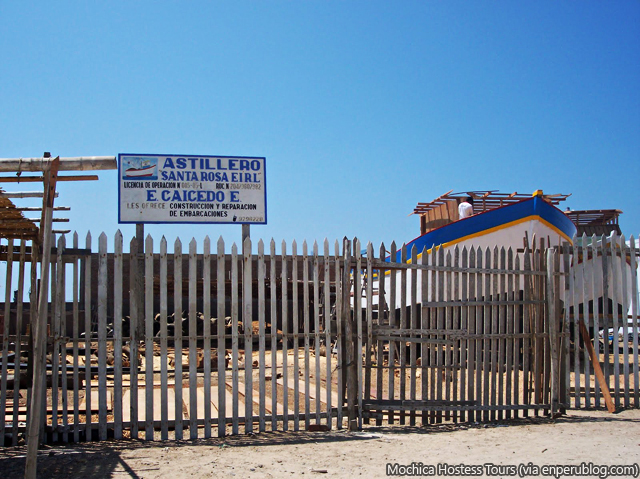
The ship yards are basic and simple. This builder has no municipal electricity and relies on a 5000 watt generator for power and lights. The tools are mostly hand tools. The only ‘floor’ tools we saw were a planner and a band saw, each with its own gas engine. The wood comes primarily from jungle towns like Tarapoto and Pucallpa and is of the species Tornillo and Faique.
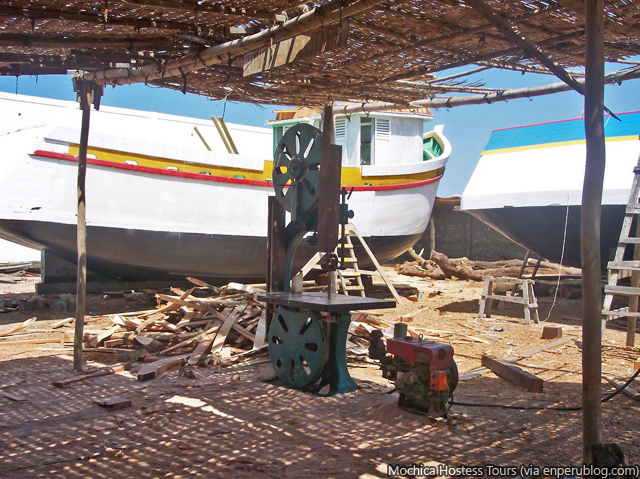
This boat is 46’long, 20’ wide and 20’deep. We were told it would take four men three months to complete it to the stage where it is ready to be fitted with the engine and other hardware, which is done on the beach by a different builder. The cost to bring it to the fully framed stage is $42,000.
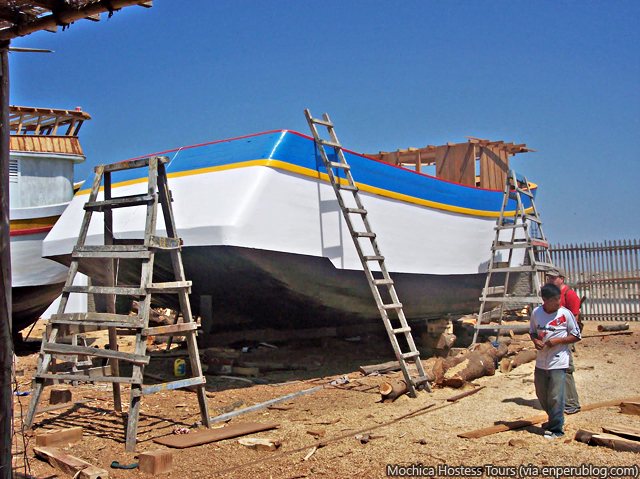
We were able to find a similar boat that is within two weeks of completion on the beach. A Volvo engine from Lima had been installed. The stainless steel walls of the hold; winches, electronics, rails and all other hardware were pretty much in place. I was unable to determine the finished price of the boat, but I’m sure it is two or three times what it cost to get it framed.
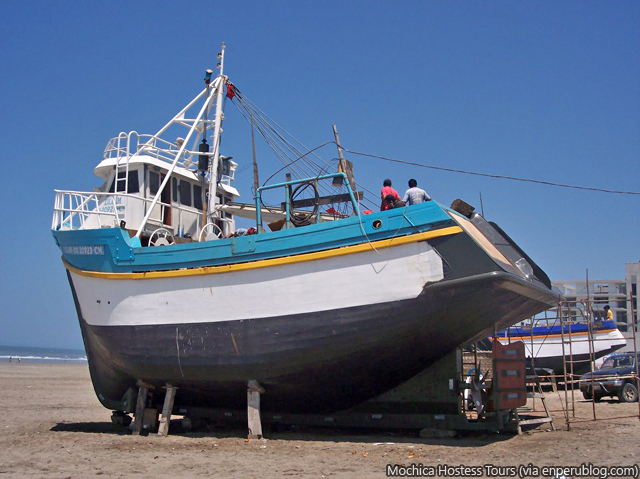
I was invited on board to take photos and quickly learned a) climbing aboard on a rickety tree-limb ladder is a feat in itself, and b) there isn’t any wasted space on a fishing boat. I couldn’t make a move without stepping on or banging into something. Nor could I find a good camera angle to show the full extent of what these boats are about. Most of the men were involved in working on cosmetic touches such as finishing cabinets in the kitchen. I would like to have seen more of the interior of the boat but given the equipment, tools and working men there simply wasn’t the room or opportunity.
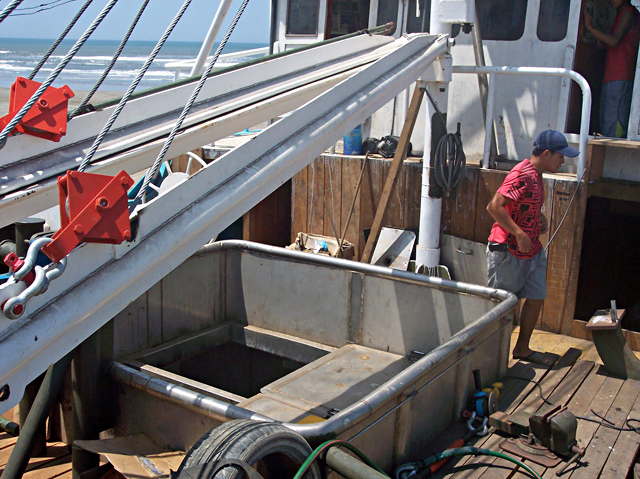
I hope to return to Santa Rosa soon, because I’ve got a lot of questions about what happens once that boat touches water. Who knows?…maybe I can get myself invited on a fishing expedition. I also want to get back to the restaurant La Brisa Del Mar. The view is great, the atmosphere relaxing and the fish is fantastic.
If you’d like to experience events like this and get a taste of real daily life in northern provincial Peru, speak to Tom & Maribel via Mochica Hostess Tours
Tags: fishing, lambayeque, ship




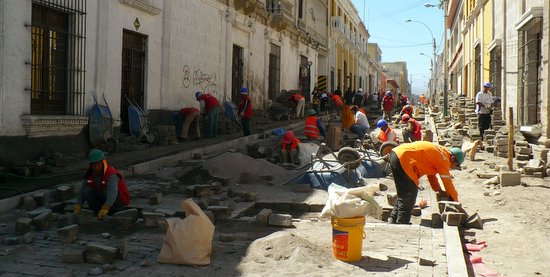


![Food business taking off in Peru [Featured]](http://farm3.static.flickr.com/2461/3616418081_a058a9f62e_m.jpg)

